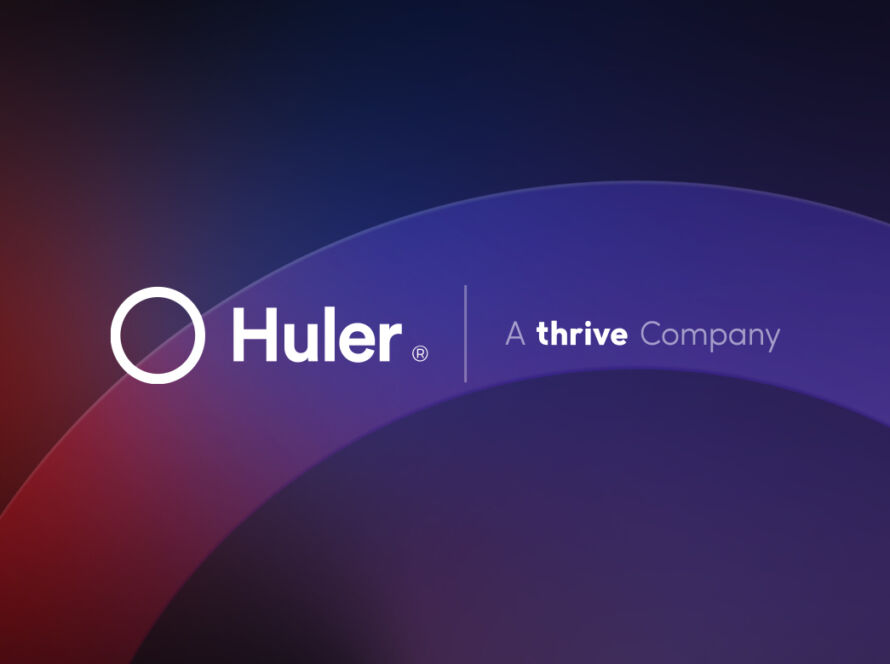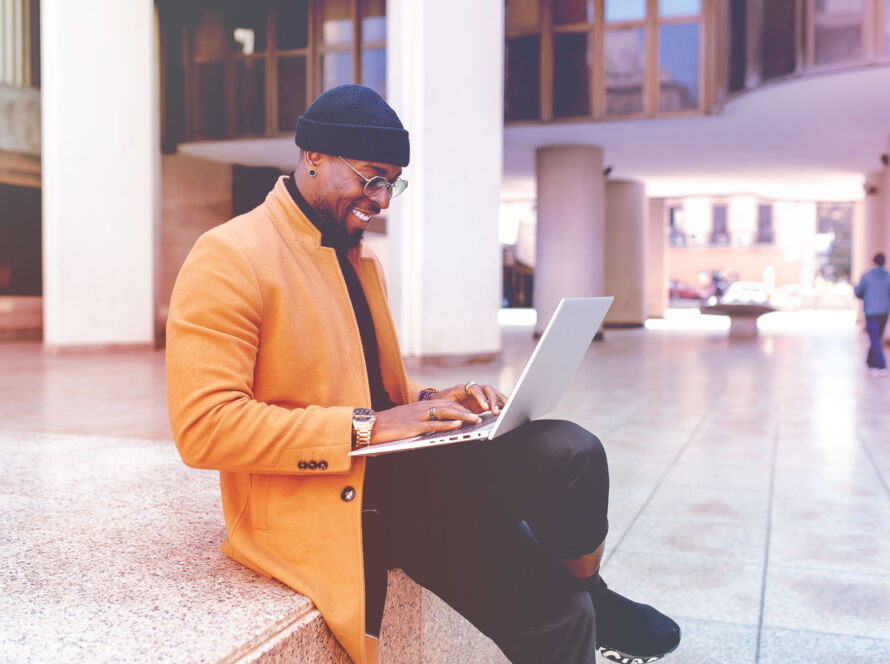Much has been said already about ‘The Great Resignation’ in 2022 already. According to The Telegraph, half of Britain’s workers are considering changing jobs, with younger employees leading the charge. As you might imagine, this revolution of sorts has caused quite a stir amongst the HR Community, with experts scrabbling to understand the why behind this mass exodus… and work out what it is that employees actually want.
For some organisations, the situation is getting increasingly desperate. Wired recently reported that a number of tech firms are struggling to replace the talent they’ve lost to The Great Resignation. So much so that they are resorting to extreme measures such as offering monetary incentives just to show up at interviews.
While panic is, of course, unavoidable when you’re faced with a hemorrhaging workforce, we’d like to offer a glimmer of hope in uncertain times. You see, we don’t necessarily think that The Great Resignation is necessarily a bad thing for employers or society as a whole. In fact, we think it’s an opportunity for businesses to pause and consider their employee experience design in light of what is happening. It’s an opportunity to pivot and meet employees where they are and, crucially, where they want to be.
If you feel skeptical about this, we don’t blame you. But bear with us as we explain and offer up a few ways you might reframe The Great Resignation as The Great Reset.
Reframing The Great Resignation
Discussions around The Great Resignation have reached a fever pitch in the last few months. And it’s not hard to understand why. According to the ONS, job moves hit a record high of 988,000 in the final three months of 2021, driven by worker resignations rather than dismissals. On top of that, many businesses across the company are now struggling to fill job vacancies.
Which leads us to the big question: why? Why on Earth are so many employees deciding that now is the time to make a change? And, perhaps more interestingly, what changes are they making? What is it exactly that’s tempting them away from their current job?
It is when we answer these questions that we can start to identify the opportunities arising from The Great Resignation.
Why Now?
So, let’s tackle the hard bit first. Why now?
Increased Demand For Flexible Working
Coronavirus forced a change in the way we work, the likes of which has never been seen before. Workers previously denied flexible working arrangements and remote opportunities have been given a glimpse of a brave new world. And it’s clear that, for the most part, they like it. This has led to a significant backlash for companies who have tried to force workers to come to the office or the workplace, particularly when employees take the view that they can do their job perfectly well from home.
The Inevitable, Delayed
There’s also another side to this too. A not insignificant percentage of workers (almost a third according to HRD) reported they have delayed resigning in the past 12 months due to uncertainty over how the pandemic will affect the job market. So, while we might be tempted to blame the toll the pandemic has taken on employees for the recent wave of resignations, the reality is that it may have already been on the cards but was delayed (like a lot of things) due to Covid.
Increased Pressure
While a lot of employees have embraced the flexibility brought about by working from home opportunities, it hasn’t necessarily been plain sailing. In 2020, a lot of organisation’s weren’t prepared to make the shift to remote work which put a significant strain on the workforce as they struggled to adjust in isolation.
This was compounded too, in no small part, by furlough which saw employees taking on additional responsibilities during a time of flux and uncertainty. Inevitably, many professionals found the lines between work and their personal lives becoming blurred, with lots of employees struggling to switch off outside of normal working hours.
Lack of communication and transparency inevitably takes both a mental and physical toll on employees, the effects of which we are seeing now as restrictions ease and we are forced to re-adapt to a new way of working.
Lack Of Support
We know that remote working arrangements aren’t new. Pre-pandemic, there were a lot of employees with flexible working arrangements in place. However, it’s probably fair to say that they were, by and large, the exception to the rule rather than the other way around.
Working remotely, or even in a hybrid way, requires a lot of thought, planning and foresight. What’s more, employees need support and guidance to ensure it works for both the organisation, their teams, and on an individual level.
Many businesses weren’t, and perhaps still aren’t, in a position where they fully understand how remote work is going to, well…work. While work technologies such as instant messaging apps and video conferencing software were adopted en masse in the beginning, not a lot of thought was put into how businesses would preserve their culture, encourage collaboration, take advantage of flexible working arrangements, and engage their employees outside of the physical office. This has led to not a small number of employees rethinking what it is they need from work.
The result of this is now, in a booming job market, a lot of people are coming to consciousness about what they want from work and they are empowered to go and seek it out, rather than wait for an opportunity to come to them.

The Great Reset
It’s not all doom and gloom though, as we’ve touched on already. In pausing to examine the ‘why’ behind The Great Resignation, many opportunities can take advantage of it by seeing it as a blueprint for change.
But first, we have to first admit that we’re long overdue a re-evaluation of work. The notion of the eight hour work day and 40 hour working week were first introduced by Henry Ford in 1926. He recognised that, in a growing consumer market, people needed to have enough free time to find uses for, and discover, consumer products. The idea was that leisure time should not be seen as ‘lost time’ or indeed a ‘class privilege’ but an integral part of life and business.
In the almost 100 years that have followed, while technology has evolved and had a profound impact on how we work, we haven’t necessarily paused to reassess what matters to us as human beings. Until the pandemic came along and forced a change that the large majority weren’t ready for.
The truth of the matter is that employees who are part of The Great Resignation aren’t necessarily opting out of the workplace entirely. Instead, they’re taking steps to find careers and jobs that make them happier and provide them with a better work-life balance. It is up to employers, on a large scale, to work with that rather than against it, and meet employees where they are.
Embracing The Hybrid Work Model
The concept of hybrid work models are gaining in popularity for this reason specifically. It’s clear employees want a new, more flexible way of working. The businesses that recognise that, and work to adopt effective hybrid workplaces will no doubt be the ones who claw back lost ground following The Great Resignation.
However, it’s important to remember that paying lip service to this idea simply isn’t enough to make it work. Organisations need to put in place very clear guidance and support around these types of models, which give employees the freedom to choose where they work, be that on-premise or remotely. That starts with transparent policies and procedures that define where employees stand and the boundaries within which they are able to choose.
And it’s not just where employees work either. How and when they work matters too. Of course, this needs to balance with the needs of the business and its customers, but it also needs to balance with the needs and wants of the people in the driving seat.
Not all job roles can work remotely either, therefore employers need to move away from the notion of a one size fits all approach. It doesn’t exist. Instead, flexibility needs to be present across the board. Offering effective asynchronous work setups, for example, empowers individuals to work in ways, and at times, that suit them, while aligning with the goals of the wider team and business. But if that isn’t possible, for whatever reason, organisations also need to rethink other areas, such as benefits and perks, to ensure everyone benefits equally from a hybrid work model.
Better Human Support
Technology that enables remote and asynchronous working is very powerful. But nothing quite beats the human touch. While some organisations are moving towards flatter organisational hierarchies, we are a long way off manager-less teams. As we emerge from the pandemic and adjust into the future, strong, empathetic, human leadership is key to high retention and engagement.
If managers aren’t equipped to support everyone, regardless of where they work, in the same way, then it’s inevitable that some will fall by the wayside. And they will be the people you lose to The Great Resignation.
This begins with building and nurturing a people-first culture that innately understands the very human needs of the workforce. People aren’t like algorithms or pixels. By and large they thrive off interaction, support, and clear communication. Above all, however, they need to feel that their contribution to the business is valued and appreciated. That they are having a significant impact and moving towards a shared goal.
Personalised Employee Touchpoints
There are many make or break touchpoints in the employee journey that can severely impact, or boost, retention.
The onboarding process is no doubt one of these. And it’s no secret that a large percentage of businesses don’t do it well – at least according to their employees. Gallup reported that only 12% of employees strongly agree that their organisation does a great job onboarding new employees. Which means that nearly 90% believe the opposite.
When key touchpoints are defined by process or paperwork, they no longer serve employees, or go far enough to meet them where they are. That is why personalisation of these areas is so important. Employees want answers to their specific questions. As individuals, they like to work a certain way and appreciate when they are accommodated to do so. They want to see information that is relevant to them and have frictionless experiences at work, regardless of where they work.
Happily, there are lots of tools, strategies and approaches that can support organisations to take control of the employee experience and those touchpoints, and make them more personal. Employee experience platforms and employee engagement tools form part of this approach. These kinds of systems provide a central hub for everything employees need, with dynamic audience targeting tools on hand to make internal communications and, indeed an employee’s digital workplace as a whole, hyper relevant to the specific needs of employees.
Prioritising Mental Health & Wellbeing
We’re all very keenly aware that poor mental health and wellbeing has a significant impact on productivity, quality of work and much more. Not to mention, on a human level, it can be devastating for individuals and their families.
Rather than bury their head in the sand, businesses need to face up to the fact that a proportion of their very human workforce will experience some form of mental health problems during their working life. Where, once upon a time, organisations might have considered this not to be their problem – it very much is. And failing to address it will only result in higher absences and turnover as poor mental health takes its toll on their workforce.
A robust mental health in the workplace strategy is a great way to provide that support, but it goes further than that too. Free counselling and mental health support is but a sticking plaster in a culture that demands blood, sweat and tears day in, day out from employees.
To go the extra mile, and keep their workforce healthy, businesses should look to provide optimal work environments for employees. They should also be champions of the right to disconnect (which is now starting to be mandated at government level in some countries) and maintain a healthy work-life balance from the top down, with everyone on the same page when it comes to the fact that happy workers are healthy, productive and more likely to stick around.

No Going Back
Change has happened right under our noses. And there is no going back. Instead, it’s time that we move forwards in a positive way. Instead of a tug of war between what employees want and what employers want, we perhaps need to think like Henry Ford back in 1926. What do we, as a society, need to progress now as consumers, employees, and individuals?
And it all boils down to flexibility and trust. The right to choose matters to everyone because they haven’t been empowered to choose before. Work-life balance matters because we have all been forced to reassess our priorities due to Covid and lifestyle changes over decades.
It is simply not enough to give employees access to Zooms, Teams, etc and call it a day. Organisations need to lead from the front in their commitment to put their people-first and cater to their needs, in a way that also balances the needs of the business. Which may be achieved through flexible working policies, hybrid work models, asynchronous ways of working, flexible benefits, championing the right to disconnect, and valuing the benefits that come from allowing individuals to make the most of their lives, working or otherwise.
Here at Huler, this is what we’re passionate about. This is where we stand. How technology enables positive, human change that encourages both business growth and individual growth through the lens of work is what drives us.
Your people are more than numbers, or cogs in a machine. They’re affected by the world around them. They have been affected by significant changes to the world around them. It’s time we listened to that and mustered the courage to make the positive changes necessary to keep people engaged and feeling good about their contribution.
That’s why The Great Resignation isn’t the big, bad wolf we fear it to be. It’s a new opportunity. The opportunity to press reset and stay in control, especially when all around us are losing their heads.
For more information about Huler, and what we can do to support your business through The Great Reset, contact us today.





